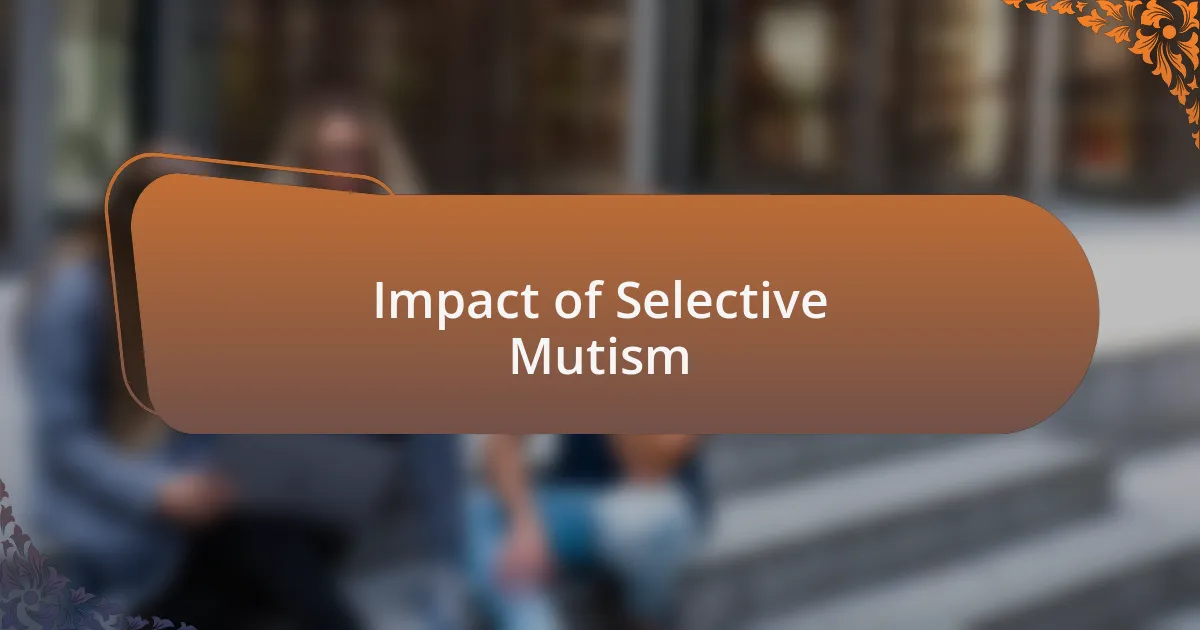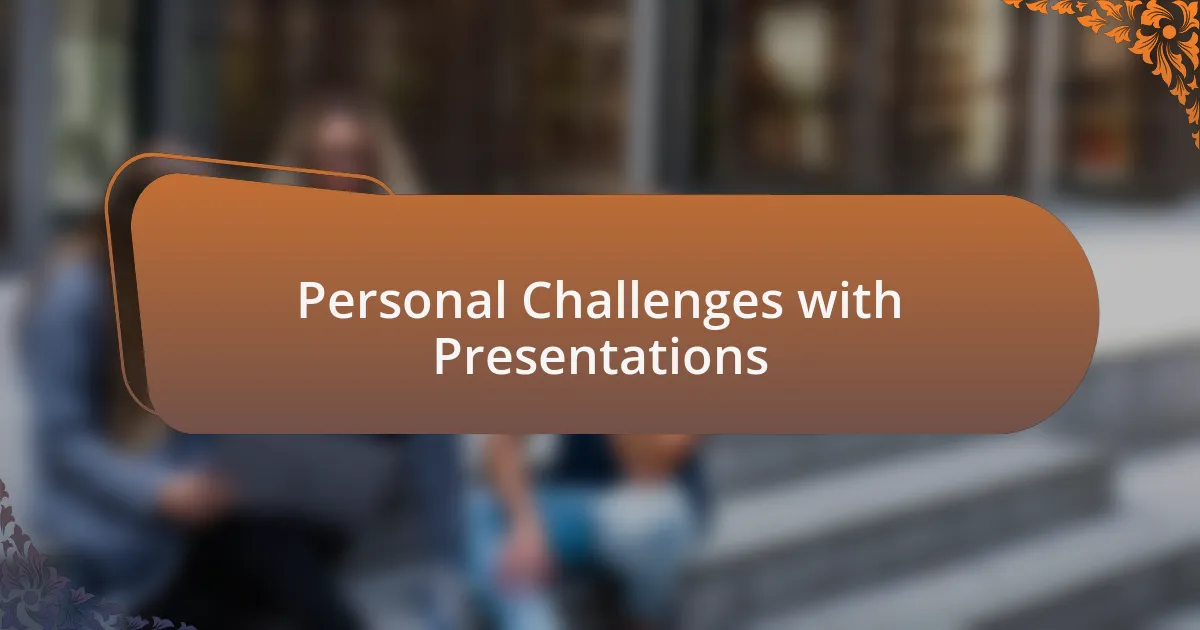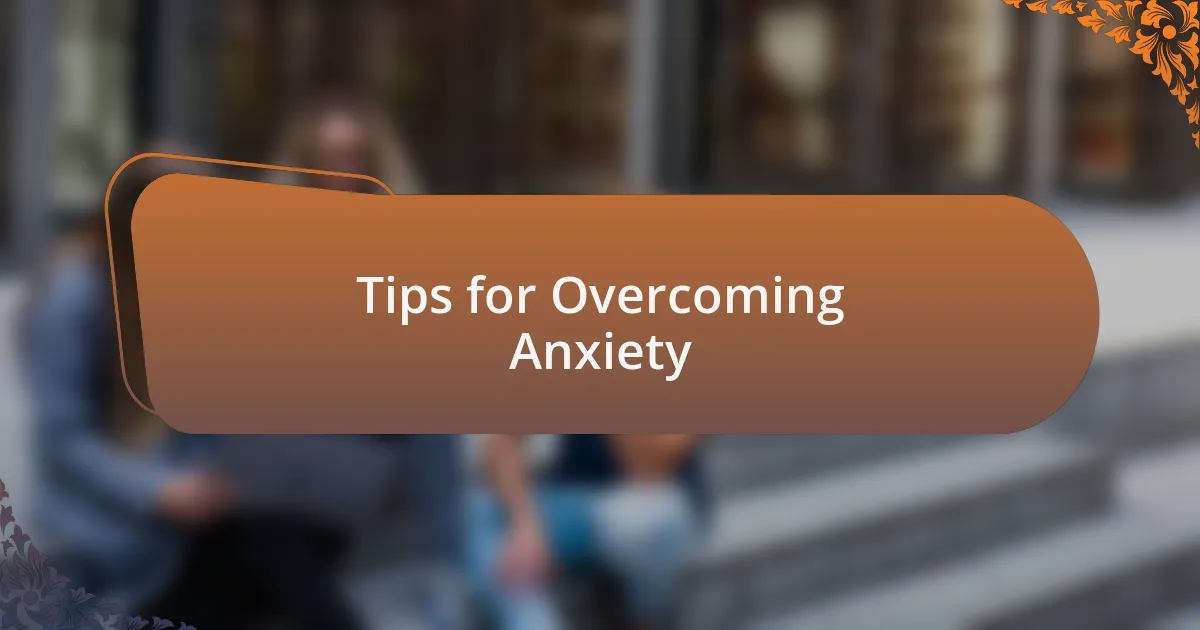Key takeaways:
- Selective Mutism is an anxiety disorder affecting children’s ability to speak in certain social situations, leading to feelings of isolation and hindering academic performance.
- Awareness and understanding in schools can significantly improve the environment for children with selective mutism, fostering patience and creative communication methods.
- Implementing alternative communication strategies, such as buddy systems and visual aids, can empower students and help them express their ideas without the pressure of speaking.
- Coping techniques like deep breathing, practice, and reframing the purpose of presentations from performance to sharing can reduce anxiety for students during public speaking situations.

Understanding Selective Mutism
Selective Mutism is a complex anxiety disorder that often manifests in early childhood, where a child who is capable of speech fails to speak in specific social situations, such as at school. I remember a classmate who always seemed so eager to participate during casual gatherings, yet when it was time for presentations, he would freeze up completely. It makes me wonder how many children feel similar pressures and are silently struggling in environments that demand speech.
The experience of selective mutism can be both isolating and confusing. For some, it stems from deep fears or previous negative experiences related to speaking out loud. I think back to the intense anxiety I felt before giving presentations; it’s a small glimpse into what it must feel like for those affected, where the fear often becomes paralyzing, overshadowing their desire to express themselves. Have you ever felt trapped by your own fears in situations that should be freeing?
Understanding selective mutism requires empathy and awareness from everyone around the child. It’s crucial to create supportive environments that encourage communication at a comfortable pace. I’ve seen the difference that a patient teacher can make, fostering a space where students can gradually build confidence. What can we do as a community to ensure that children feel safe enough to share their voices?

Impact of Selective Mutism
The impact of selective mutism extends far beyond mere silence. For children grappling with this condition, the inability to speak in certain situations can lead to feelings of rejection by peers and adults alike. I recall an incident where a friend was overlooked during group activities simply because she couldn’t voice her ideas, leaving her feeling invisible—an experience that cut deep into her self-esteem. How can we help children like her feel seen and valued for who they are, beyond their voice?
Social interactions become a daunting labyrinth for those with selective mutism. I’ve witnessed firsthand how the pressure to speak can transform what should be a joyful classroom into a source of anxiety. Observing peers engaged in lively discussions while someone sits quietly can be heart-wrenching. It makes me realize that every silent moment conceals a world of thoughts and creativity—how many innovative ideas are going unshared simply due to the fear of speaking up?
Academically, children with selective mutism may struggle as their reluctance to participate can hinder learning opportunities. I often think about how presentations are not just assessments of knowledge, but critical chances for expression and connection. When a child cannot participate in these moments, what other skills might they be missing out on developing? It raises important questions about our educational practices and the need for more inclusive approaches that nurture every child’s voice, regardless of their communication challenges.

Importance of Awareness in Schools
Awareness in schools is crucial for creating an inclusive environment where every child feels safe and supported. I remember a time when a teacher recognized a student with selective mutism and took the time to educate the class about it. The change was palpable—students learned to be more patient and understanding, which fostered a sense of belonging for that child. Isn’t it incredible how a little knowledge can shift an entire classroom’s culture?
When educators and peers are informed about selective mutism, it transforms the dynamics of interaction. I often think about how my friend flourished when her teachers employed alternative communication methods, like allowing her to express her thoughts through art. It reminded me that there are numerous ways to engage children; the key is being open to exploring those avenues. Shouldn’t we embrace creative solutions to ensure no child is left unheard?
Furthermore, educating staff about selective mutism goes a long way in minimizing misunderstandings. I’ve witnessed scenarios where teachers inadvertently pressured silent students to speak, resulting in heightened anxiety. By equipping educators with the right tools and approaches, we can foster an environment that prioritizes emotional well-being and encourages all students to thrive. Isn’t it time we made every child’s educational experience as fulfilling as possible?

Strategies for Supporting Students
One effective strategy for supporting students with selective mutism is to provide opportunities for alternative forms of communication. I recall a time when a classmate struggled to participate verbally but excelled in writing. Our teacher encouraged her to share her stories in a written format during class discussions, allowing her voice to be heard without the pressure of speaking out loud. It was incredible to witness her confidence grow as she realized her thoughts had value, regardless of the medium.
Creating a buddy system can also be beneficial. When I was in school, a friend of mine was paired with a more outgoing peer. This connection fostered a comfortable space where he could gradually gain confidence in social situations. It was heartwarming to see how this simple strategy empowered him to start speaking more over time. How powerful would it be if every quiet student had someone supportive to lean on in their journey?
Lastly, adapting the presentation format can make a world of difference. I remember when a teacher suggested we use visual aids during our presentations—like posters or slides—rather than relying solely on verbal communication. For students who find public speaking daunting, this not only eases anxiety but also showcases their creativity. Why not explore these diverse approaches to help every student shine?

Preparing for School Presentations
Preparing for school presentations can feel overwhelming, especially for students grappling with selective mutism. I recall preparing for my first class presentation and the knot in my stomach as the date approached. It helped when I broke down the task into smaller steps—researching the topic first, then outlining my thoughts, and finally creating visual aids. This process took the pressure off, allowing me to focus on sharing the information rather than stressing over my delivery.
Practicing in a low-stakes environment can also be tremendously helpful. During my final year, I decided to practice in front of my family before presenting in class. The warmth and encouragement I received helped me refine my presentation style while alleviating some of the anxiety. How often do we underestimate the value of a supportive audience, even if it’s just family or close friends?
Finally, choosing familiar topics can boost a student’s confidence. I often felt more empowered when I presented on subjects I was passionate about, like my favorite books or hobbies. When students engage with material that excites them, it transforms their fear into enthusiasm. Have you ever noticed how much easier it is to talk about something you love? This can be a game-changer for students struggling with anxiety around public speaking.

Personal Challenges with Presentations
Presenting in front of a class often felt like stepping onto a stage with all eyes on me, amplifying my anxiety. The silence would weigh heavily on my shoulders as I stood there, my heart racing and my mouth dry. I vividly remember one instance where my mind went blank during a presentation, leaving me grappling for the words I had practiced. How frustrating is it when you know your material but your body betrays you in that moment?
The fear of being judged sometimes held me back, even when I had valuable insights to share. I would often wonder if my classmates were critiquing my stutter or the pauses in my speech instead of the content. Embracing that vulnerability was difficult; I couldn’t help but think, “What if they think I’m not smart?” This internal dialogue often overshadowed my passion for the subject at hand.
On occasion, I discovered that visual aids were my saving grace. During one memorable project, I created an intricate poster that represented my ideas visually, allowing me to shift some focus away from my spoken words. When I could point to my work, it created a bridge between me and my audience, easing my fear and fostering engagement. Have you ever considered how a strong visual element could help you connect when speaking?

Tips for Overcoming Anxiety
Finding ways to cope with anxiety during presentations is essential. One method I found valuable was deep breathing. Before stepping in front of the class, I would take a moment to close my eyes and focus solely on my breath. It’s amazing how just a few deep breaths can ground you, reducing the tension and allowing clearer thoughts to surface. Have you ever noticed how something as simple as breathing can make a difference?
Practice is another crucial element. I recall rehearsing in front of the mirror and even recording myself. Watching those practice sessions not only helped me refine my approach but also familiarized me with my content. The more I practiced, the more confident I felt. How important do you think it is to visualize yourself succeeding in those moments of anxiety?
Lastly, I learned to replace the idea of “performing” with “sharing.” When I reframed my mindset, the focus shifted from my fear of judgment to the excitement of sharing knowledge with my classmates. I started thinking, “What can I teach them?” rather than worrying about their opinions. This perspective shift transformed my anxiety into a motivation to connect. Have you tried viewing presentations as an opportunity to engage rather than a stressful obligation?